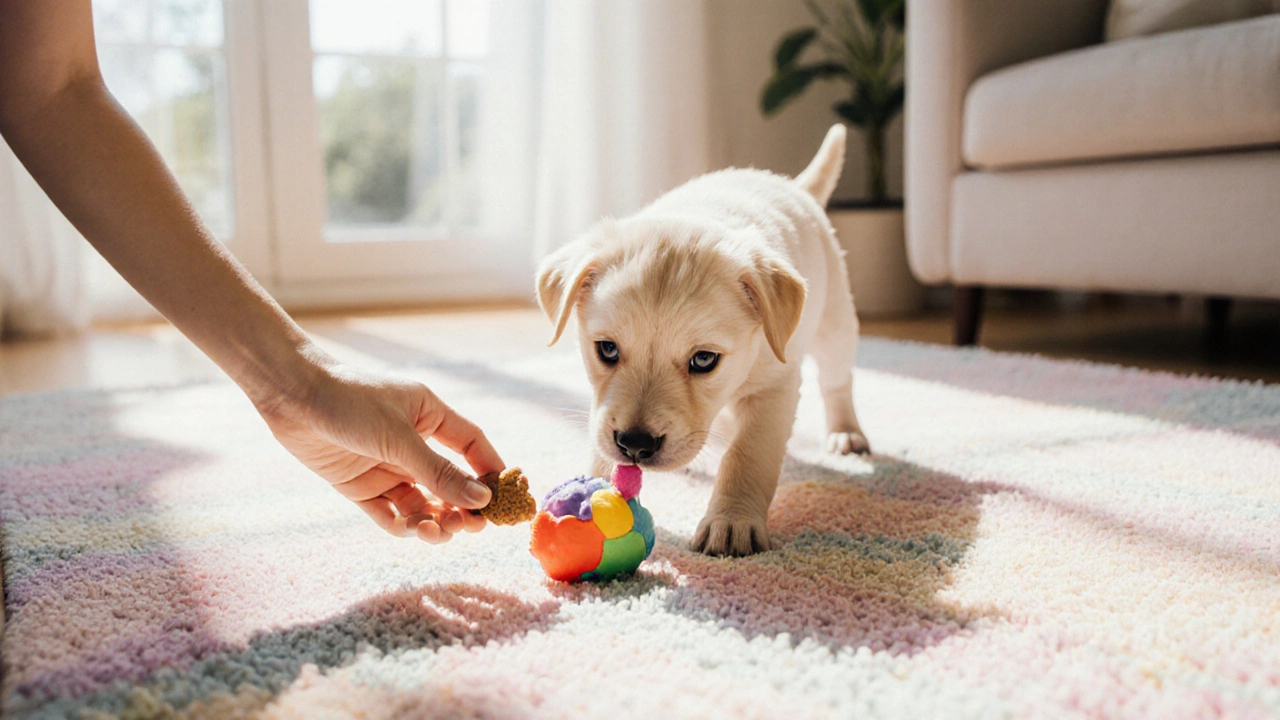Positive Reinforcement Puppy Training Guide
When working with Positive Reinforcement Puppy, a training approach that uses rewards to shape desired behaviors in young dogs. Also known as Reward‑Based Puppy Training, it focuses on encouraging the actions you want rather than punishing the ones you don’t.
One of the most popular tools in this method is clicker training, a technique that pairs a distinct sound with a treat to mark the exact moment a puppy does something right. Another key element is treat rewards, small, high‑value snacks used to reinforce a behavior immediately after it occurs. Together they create a clear cause‑and‑effect link that puppies can understand quickly.
Positive reinforcement puppy training encompasses reward‑based techniques, requires consistent timing, and builds a strong trust bond. The core idea is simple: a behavior followed by a pleasant outcome is more likely to be repeated. This principle influences everything from sit and stay to loose‑leash walking. By delivering a treat or click at the precise moment the correct action happens, you give the puppy a reliable indicator of success.
Timing isn’t the only factor—frequency matters too. Short, frequent sessions keep a puppy’s attention and prevent frustration. Keep lessons under five minutes and repeat several times a day. This rhythm matches a puppy’s short attention span and helps cement learning faster than long, occasional drills.
Why Positive Reinforcement Works
Positive reinforcement puppy training requires a calm environment, a clear cue, and an immediate reward. When those three elements line up, the brain releases dopamine, strengthening the neural pathway for the desired behavior. This biological feedback loop means the puppy is motivated to repeat the action, unlike punishment‑based methods that can cause anxiety or fear.
Clicker training influences positive reinforcement puppy training by providing a precise, neutral marker that tells the puppy exactly what earned the reward. Treat rewards enable behavior shaping, letting you break complex tricks into tiny steps and reward each micro‑success. Both tools support a low‑stress learning atmosphere, which is especially valuable during housebreaking and crate training.
Housebreaking, for example, becomes smoother when you reward the puppy for eliminating in the right spot right away. A quick treat or a click followed by praise tells the pup, "That’s the place you want to go." The same principle applies to crate training; opening the crate door only after a calm entry and then offering a treat reinforces the crate as a safe, happy space.
Many new owners make the mistake of mixing punishment with rewards, which confuses the puppy and slows progress. Sticking to pure positive reinforcement—no scolding, no yelps—keeps the learning curve steady and the bond strong. If a mistake happens, simply ignore it and wait for the next correct attempt to reward.
Below you’ll find articles that dive deeper into each of these areas: step‑by‑step housebreaking tips, crate‑training best practices, how to teach “no” without harshness, and a roundup of the top gear that makes reward‑based training easier. Whether you’re just bringing a new pup home or looking to fine‑tune an already‑trained companion, the collection offers actionable insights you can start using today.
Effective Ways to Discipline an 8‑Week‑Old Puppy
Learn practical, gentle ways to discipline an 8‑week‑old puppy, from positive reinforcement to crate training, with step‑by‑step tips and a handy checklist.
